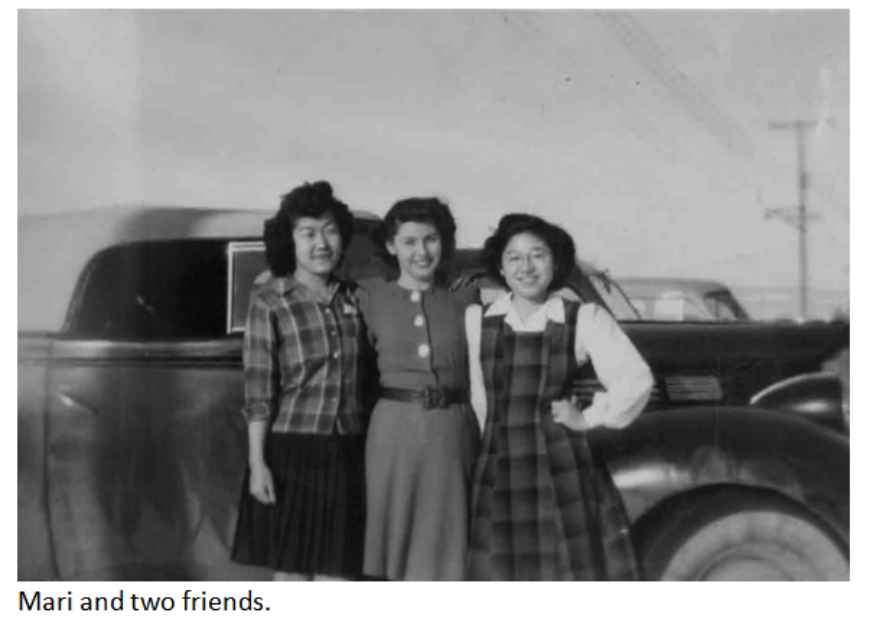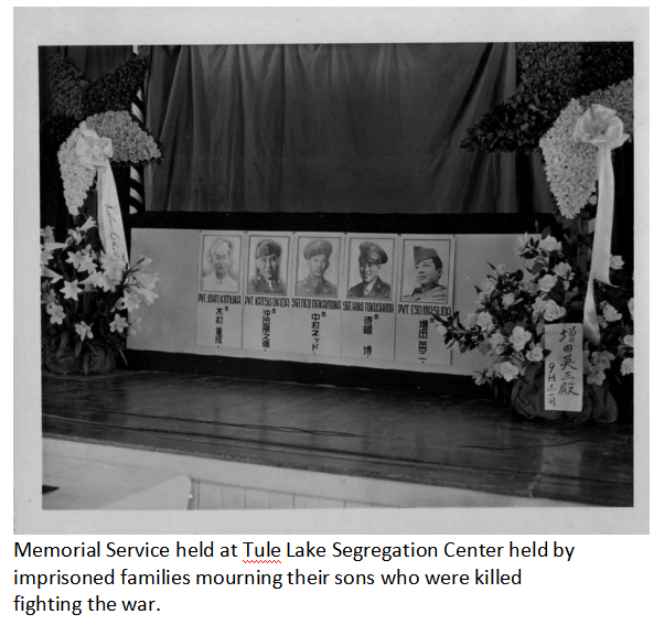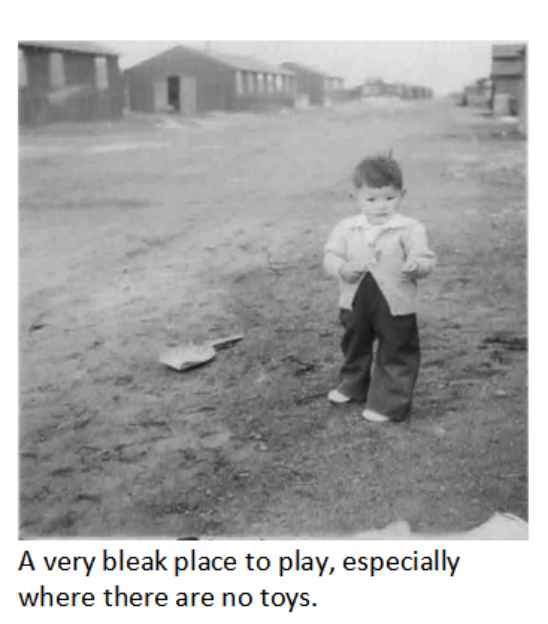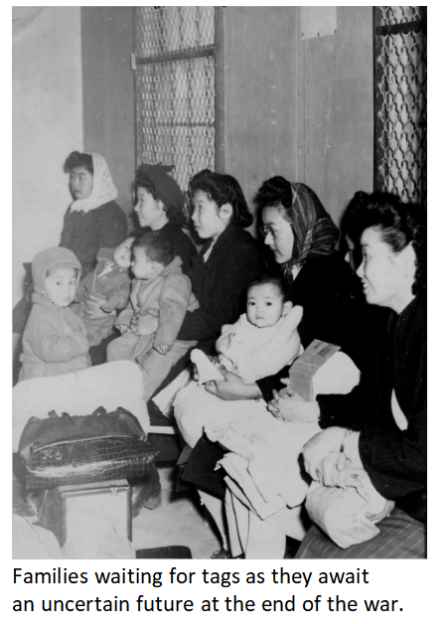By Anne E. Neuberger and Helen Hannan Parra
A story for ages 8 to adults
AWARDS from the CATHOLIC MEDIA ASSOCIATION
– FIRST PLACE: Self Published
– FIRST PLACE: Books for ages 11-16
– FIRST PLACE: Catholic Novels—Education
– HONORABLE MENTION: Memoir
Imagine you learn that there are kids your age living in a prison with their families. None of them have done anything wrong. It is racial prejudice and fear that has put these people there. Then imagine that your family volunteers to live in one of these places to help the people who are imprisoned. That is what twelve-year-old Helen Hannan experiences in 1945. She hears about these prisons before most other Americans do.
Traveling to a place called Camp Amache with her brother, sister and parents, she quickly discovers this is no summer camp. The families at Amache are living in crowded, cold barracks, behind barbed wire fences, with armed guards watching them from towers. Helen learns to cope with this. She experiences the cost of racial prejudice. She struggles to understand how some people can hurt others so badly. But she also makes many friends, and learns that everyone loves French fries! Most importantly, Helen sees first hand how vital it is to act on your beliefs. It is quite a year for Helen.
Reviews and Awards received by TWO DAYS AND ONE SUITCASE
Helen Hannan Parra interview with Brenna Davis for Education for Justice
Discussion suggestions for adults to use with children
Suggestions for adult discussion
Additional History on this topic
Additional Resources for Two Days and One Suitcase
ACTIVITY – Comparing Two Periods of U.S. History
ACTIVITY – Discrimination Before & After 1945
Buy from Amazon
This book is available in Braille for free
Why You Should Read This Book
We are living in challenging times, unprecedented in some ways. There are many eras in the past, however, when people faced problems similar to what we have now. Learning history is the best way to avoid repeating the negative aspects.
And learning history by reading a story is much more engaging than memorizing facts!
TWO DAYS AND ONE SUITCASE is a true story that is rich in history. This book:
- draws parallels to current issues of racism and immigration
- enlightens readers to a particular time in U.S. history, when the whole world was confronted with war
- has a Catholic perspective on this time period
- offers insights into a 12-year-old’s spirituality
- is an example of a family living out Catholic Social Teachings
- includes resources for students’ further research
How This Book Came About
As a writer for children, much of my work focuses on Catholicism and social justice. It was through my writing for Maryknoll, a Catholic international mission movement, that the seed of this book was planted.
I discovered that Maryknoll missioners working in Asia were called home when the United States entered World War II. Many volunteered to enter the relocation centers, or internment camps, where innocent Japanese-Americans were held for over three years.
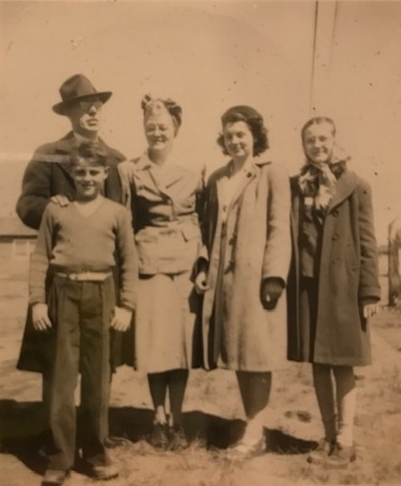
The Hannan family. Helen is on the right.
Curiosity about this work led me to the story of the Hannans. This Catholic family had a strong sense of justice based on their faith. Helen, the youngest, was 12 years old when her father, a lawyer, began to hear about places where large groups of Japanese-Americans were being held for the duration of the war. The Hannans were very perplexed, as there had been no information about it at all during these war years.
Now that the war was coming to an end, there was a need for lawyers to go into the “camps” to help with legal problems. Motivated by their strong values of social justice, Helen’s parents packed up their old 1937 Packard and headed to Camp Amache in Colorado (and eventually to Tule Lake Segregation Center in California), to see what they could do.
There Helen encountered a world unlike anything she had known before. For nine months, the family struggled to help beleaguered Japanese-Americans who had suffered the loss of their former lives: their dignity, work, communities, homes and for some, even their U.S. citizenships. To get themselves and many others through these trials, the Hannans used creativity, tenacity, humor and prayer.
Helen and her family were outsiders to the situation. But this observant, intelligent and compassionate young woman came to understand the complex situation and to reach out to many of the interned children. Through her, readers who are themselves “outsiders” because of the passage of time, can come to comprehend a piece of our national history that was kept secret for decades. And it is imperative that they learn of this situation, when unconstitutional action on the part of the US government allowed war hysteria and racism to deny 120,000 people their rights.
This is a timely story. Increasingly I have been seeing references to this piece of history. There have been many comparisons between this and problems that are brewing right now, such as the travel ban that affects many Muslims, and the plight of immigrant children taken from their parents at the border of Mexico and the United States.
There are additional books for young readers about the topic of this mass incarceration. The Invisible Thread by Yoshiko Uchida, Farewell to Manzanar by Jeanne Wakatsuko Houston, and Baseball Saved Us by Ken Mochizuki are examples. They are told from the perspective of children who were forced into the camps. These are important stories. However, Helen Hannan brings a different perspective that is also very valuable. Young Helen encounters new circumstances that shock her but her openness and warmth also lead her to see the goodness and dignity in others. Because Helen was actually living in the camps voluntarily, not forced as the other children were, her perspective lays out the history in a way that today’s children may more easily grasp.
Helen is now 88. She shares many incredible, disturbing, and delightful details of that time, in hopes that readers will see parallels with today’s issues and learn the importance of recognizing and working for the dignity of all people.




